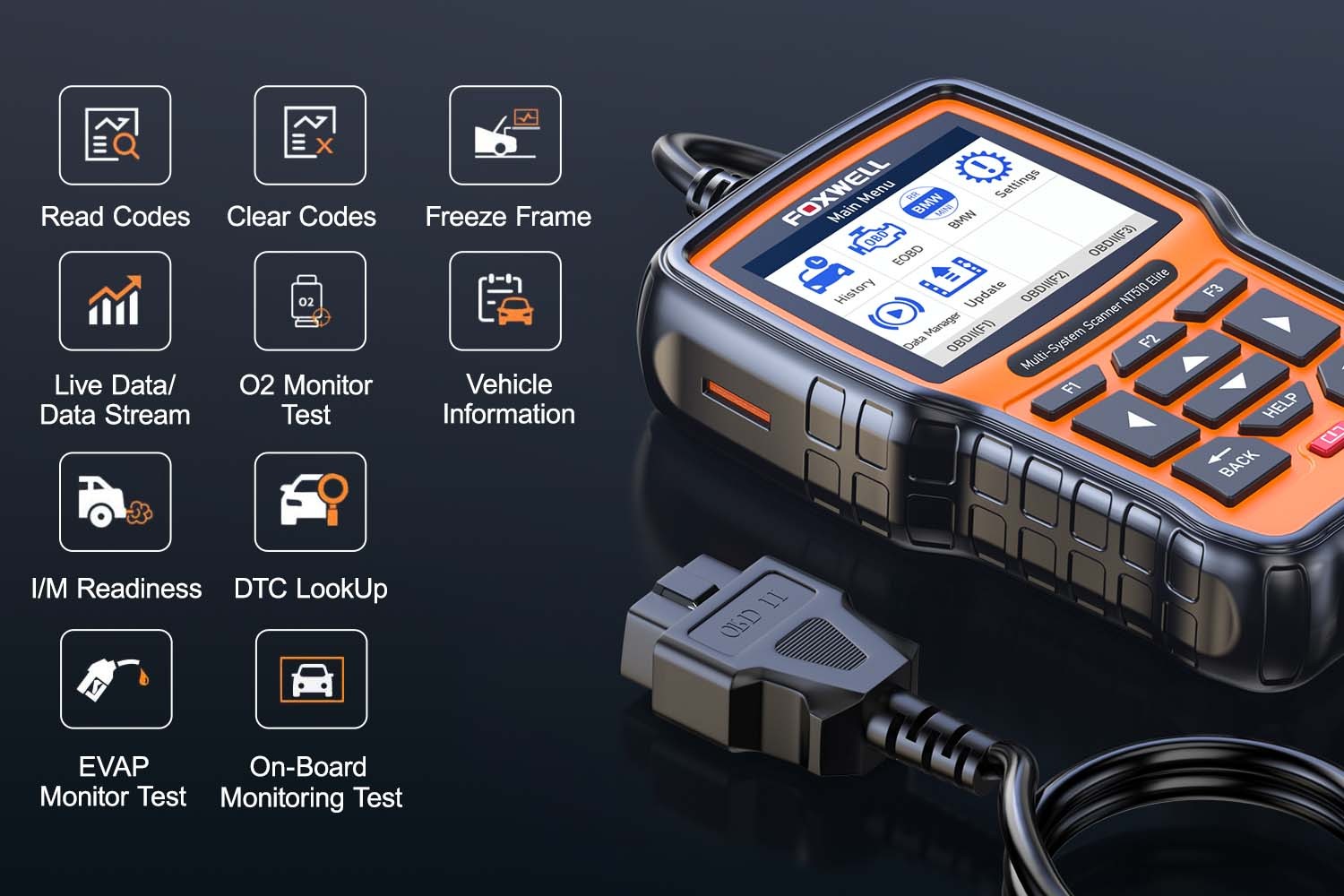Modern vehicles rely on fuel injectors for precise fuel delivery into the combustion chamber. These intricate components play a crucial role in engine performance, fuel efficiency, and emissions control. Malfunctioning Obd2 Injectors can lead to various problems, impacting drivability and overall vehicle health. Utilizing an OBD2 scanner is essential for diagnosing and troubleshooting these issues.
The Role of OBD2 Scanners in Diagnosing Fuel Injector Problems
On-Board Diagnostics II (OBD2) scanners are invaluable tools for diagnosing car problems, including those related to fuel injectors. These scanners communicate with the vehicle’s Engine Control Unit (ECU), providing access to diagnostic trouble codes (DTCs), real-time data, and sensor readings. This information helps pinpoint the root cause of fuel injector issues.
Preparing for a Fuel Injector Diagnostic Test with an OBD2 Scanner
Before using an OBD2 scanner to test fuel injectors, gather the necessary tools and ensure a safe working environment.
- Compatible OBD2 Scanner: Choose a scanner that supports your vehicle’s make and model.
- Vehicle Preparation: Park the vehicle on a level surface, turn off the engine, and engage the parking brake.
- Locate the OBD2 Port: The OBD2 port is typically located under the dashboard on the driver’s side.
- Connect the Scanner: Plug the OBD2 scanner into the port.
Retrieving Fuel Injector Data Using an OBD2 Scanner
- Power On: Turn the vehicle’s ignition to the “on” position without starting the engine. Then, power on the OBD2 scanner.
- Establish Connection: Allow the scanner to establish communication with the ECU.
- Access Live Data: Navigate to the “Live Data” or “Data Stream” section of the scanner’s menu.
Key Parameters for Diagnosing OBD2 Injectors
Focus on the following parameters within the live data stream:
- Fuel Trim: This indicates how the ECU is adjusting fuel delivery to maintain the ideal air-fuel ratio. Significant positive or negative values can suggest injector problems.
- Injector Pulse Width: This measures the duration the injector remains open. Abnormal pulse width readings can point to malfunctioning injectors.
- Cylinder Misfire Data: This identifies if a specific cylinder is experiencing misfires, which could be caused by a faulty injector.
Diagnosing Fuel Injector Issues with an OBD2 Scanner
- Compare Data: Compare the fuel trim, injector pulse width, and cylinder misfire data to manufacturer specifications or known good values. Deviations can indicate potential issues.
- Check for DTCs: Look for specific injector-related trouble codes, such as P0200 (Injector Circuit Malfunction).
- Clear Codes and Reset: After addressing any identified issues, clear the diagnostic trouble codes and reset the ECU.
Benefits of Using an OBD2 Scanner for Fuel Injector Diagnostics
- Early Detection: Identifying problems early can prevent more extensive damage and costly repairs.
- Improved Performance: Addressing injector issues can restore engine performance, resulting in smoother operation and better fuel economy.
- Reduced Emissions: Properly functioning injectors contribute to lower emissions, benefiting the environment.
- Simplified Troubleshooting: OBD2 scanners simplify the diagnostic process, making it easier to pinpoint the cause of problems.
Conclusion
OBD2 scanners are indispensable tools for diagnosing and troubleshooting OBD2 injector problems. They empower both professional mechanics and DIY enthusiasts to identify and address issues efficiently, leading to improved vehicle performance, reliability, and longevity. Investing in a quality OBD2 scanner is a wise decision for anyone who wants to maintain their vehicle’s health and performance. By understanding how to use an OBD2 scanner effectively, car owners can save money on repairs and keep their vehicles running smoothly.
